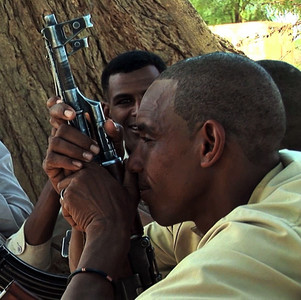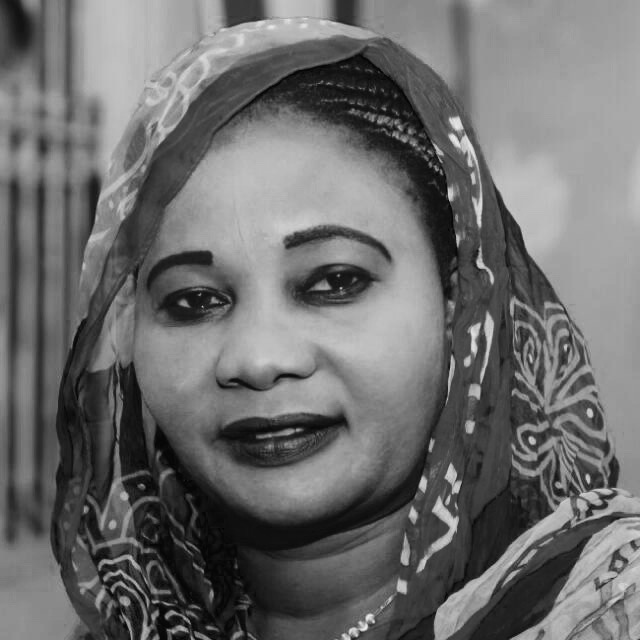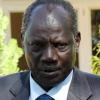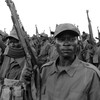“Our gun laws are stricter than the Americans’”
Fatima Ghazali interviewed Dr. Mahmud Zine el-Abidine, the Sudan Disarmament, Demobilization and Reintegration Commission (SDDRC) Planning, Follow-up and Evaluation Director:
Dr. el-Abidine, what is the difference between small arms and light weapons?
Small arms are used by one person only and include pistols, rifles and Kalashnikovs. Light weapons however are manned by a crew and include Heckler & Koch machine guns, RPGs, AGS grenade launchers, automatic cannons and missile launchers.
Are there other types?
Yes. There are conventional weapons, which are heavy weapons that do not carry nuclear heads, such as tanks, rocket platforms, warplanes, helicopters and armoured vehicles. There is a UN register called the UN conventional weapons register.
On April 2, 2013, the UN General Assembly adopted the Arms Trade Treaty (ATT), but Sudan has reservations. Why?
Because the Arms Trade Treaty gives exporting countries the right to intervene in an importing country’s affairs. It also focuses on depriving third-world countries of their rights and includes terms and concepts which have not been agreed upon, not even within the UN. In addition to Sudan, 20 other countries have reservations, including India, Egypt, Jordan, Latin American states and East Asian states.
But all the superpowers have ratified the Arms Trade Treaty. Why?
Yes, because it meets their aspirations and wishes.
Who is allowed to carry arms in Sudan?
Regular forces, paramilitary forces, citizens with a license to carry arms, and citizens with registered and marked arms in Darfur.
What are the conditions for weapons licensing?
Licenses are provided to citizens in accordance with the Sudanese Weapon, Ammunition and Firework Law (SWAFL), which stipulates a specific age and mental status as well as a clean criminal record for applicants.
Who is not legally allowed to carry arms in Sudan?
Ex-convicts, people with physical illness, people who are blind or have impaired hearing. There is a discussion about the legality of carrying arms and who shall be allowed to carry arms: merchants, farmers, shepherds, etc. Any Sudanese is eligible to carry arms; but the state looks into why someone wants to get armed.
Do Sudanese carry arms for personal protection or is it part of the culture of local communities?
According to surveys conducted in Sudan, most people say they have weapons because of political conflicts rather than for cultural reasons. Arms are like any other commodity; when someone buys a new car they like to boast about it to other people – the same applies to arms.
I have noticed that parents buy toy guns for their children; therefore, I call upon families not to buy violent toys for children. Our conflict and dispute culture is already violent and we want to change this pattern by removing it from the minds and hearts of people before the physical disarmament takes place. Arms are just a tool, but a violent attitude is more dangerous.
Are there places for selling arms in Khartoum?
Yes, and these are legal arms which are licensed.
What happens to civilians found carrying illegal arms?
Any weapon shall be dealt with according to laws and regulations; otherwise, it will be deemed illegal.
What weapon poses the biggest threat in Sudan?
Kalashnikovs. Many small arms experts describe Kalashnikovs as the true weapon of mass destruction. More than 90 percent of weapon victims in Africa are killed by Kalashnikovs.
What proportion of citizens carry Kalashnikovs in Sudan?
It is difficult to know. There is a proliferation of this weapon. It is used by citizens, the official apparatus, armed robbery gangs and undisciplined groups.
What fuels this trend?
It is easy to carry, hide and dispose of (by selling it). It is also cheap, robust, durable and ammunition is widely available. Its numerous advantages make it the weapon of preference for many.
Do some groups get Kalashnikovs from the state?
We cannot say that because arms markets are all over the world. Here we may raise several questions: who armed the Darfur movements? Who armed the Sudan People’s Liberation Army - North (SPLA-N)? The answer is that many circles of private companies, brokers and networks trade in arms globally.
Arms can be easily acquired. That is why the UN has developed the UN Programme of Action against the illicit trade in small arms and light weapons. The programme aims to coordinate the international efforts to control arms, especially Kalashnikovs, because states alone are incapable of controlling arms movement.
Sudan seeks to cooperate with neigh- bouring countries, such as Libya, Chad, and Africa as a whole to control small arms and light weapons. Interior Ministers and internal security representatives from these countries met in 2012 and issued the Khartoum Declaration on the Control of Small Arms and Light Weapons, which fosters cooperation and coordination of efforts among these countries to minimise weapon transportation across their borders.
Is there any difference between the approaches to dealing with arms in Sudan in general and in Darfur?
In Darfur, we face a different situation with registering and marking the weapons. The Ministry of Interior (MoI) and the SDDRC, in cooperation with the state governments of South Darfur and West Darfur, have developed a structure to control illegal armsby marking and registering them at local administrations. So far, the MoI and the state government of South Darfur have registered and marked nearly 12,000 weapons, in addition to 4,000 weapons in West Darfur.
How are arms marked?
Numbers and symbols are carved on the metallic part. This means citizens cannot sell their marked weapons to others without official permission.
Why has this technique been chosen?
Because it suits the reality in Darfur. We deem it the best way to control arms there.
What are the challenges facing the SDDRC?
A wide-scale proliferation of weapons, a large number of armed groups, inter-communal conflicts in some areas, armed rebel movements, and the activities of arms dealers.
Has any Darfuri group responded to the calls for registering and marking arms?
I prefer not to talk about specific tribes because it can worsen the problem of armament. I would rather talk about the illegal posses- sion of arms by Sudanese citizens rather than by tribes. We have a problem with armed citizens. Arms should only be carried by regular forces.
You mentioned an agreement between Sudan and neigh- bouring countries like Chad and Libya to limit the flow of arms. These countries, however, have helped arms flow into Darfur, especially during the Chadian-Libyan conflict.
There are several reasons behind the flow of arms in Darfur including armed robbery, conflicts among neighbouring countries, the last rebellion, rebel movements in neighbouring countries, weapons dealers, and internal conflicts.
What do you think about the arms market in Dimso in South Darfur where arms are sold in broad daylight? Is there not a law to deter such markets?
There are some strict deterrent laws. The SWAFL is stricter than the American version: It prevents any Sudanese from carrying arms unless they are over thirty, while US law allows an 18-year-old citizen to carry arms. But there is a problem with the enforcement of the law in remote areas. Arms trade is widespread in border areas like Dimso.
The fact that such arms can be hidden quickly and easily and transported has attracted the attention of Sudan and neighbouring countries and prompted them to coordinate efforts in terms of laws, procedures and field work. They have joined forces to minimize arms proliferation.




